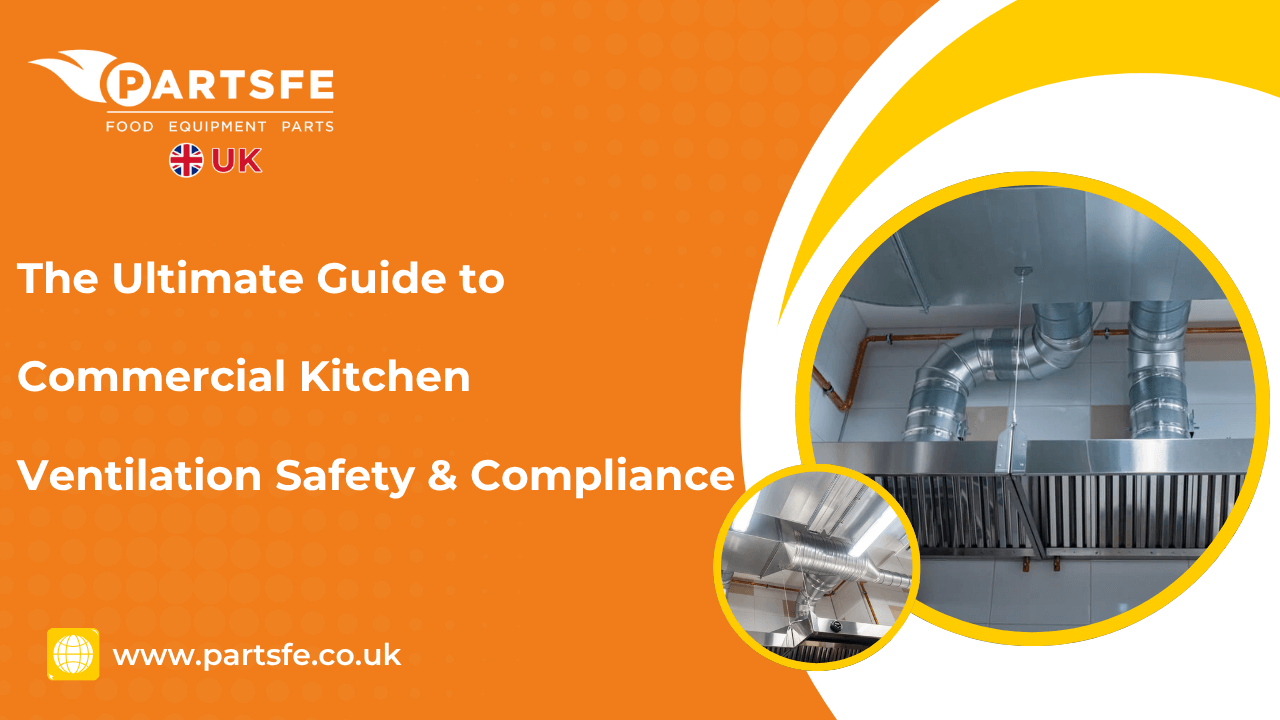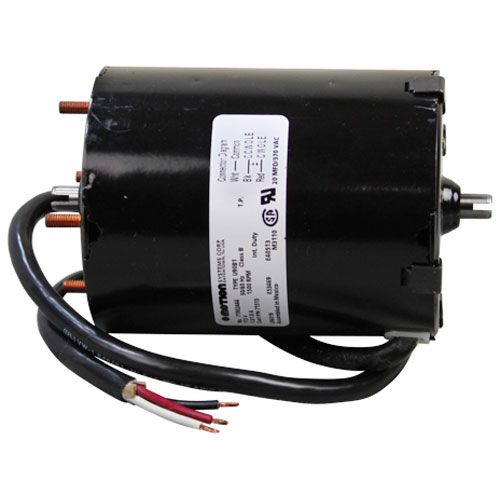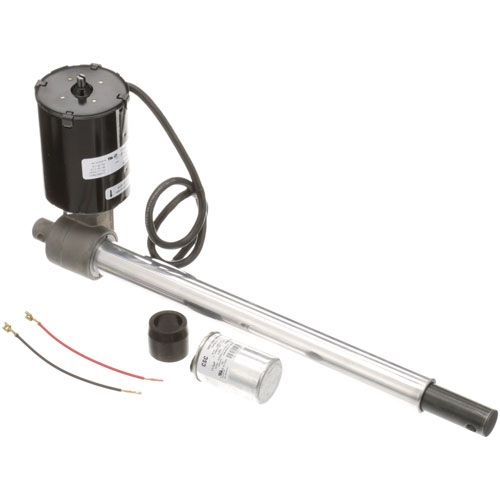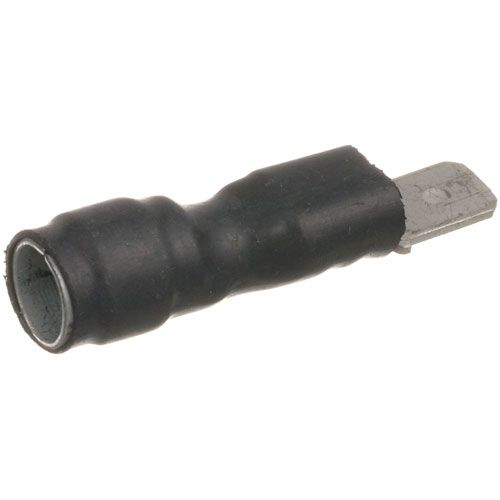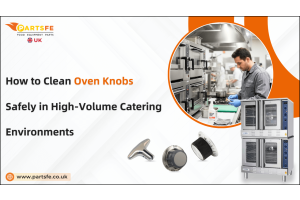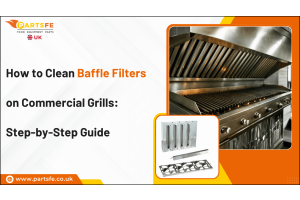The Ultimate Guide to Commercial Kitchen Ventilation Safety & Compliance
Setting up and maintaining a commercial kitchen ventilation system is paramount for ensuring safety and compliance. A well-designed and maintained system not only controls heat, smoke, and odors but also protects staff health and significantly improves fire safety. Neglecting ventilation can lead to serious health risks, decreased productivity, and potential legal issues. This article provides a comprehensive overview of these safety and compliance risks, along with strategies for mitigating them.
Why Ventilation is Crucial in Commercial Kitchens
Proper ventilation in a commercial kitchen is more than just a matter of comfort; it's a fundamental necessity for operational efficiency, safety, and legal compliance.
-
Controlling heat, smoke, and odors: The primary function of a commercial kitchen ventilation system is to remove airborne contaminants and excess heat. Cooking processes release smoke, grease vapors, and strong odors. A robust extraction system captures these pollutants at the source, typically at the cooking equipment, and expels them outside. This process maintains clean and fresh kitchen air, preventing odors from spreading to dining areas and ensuring a comfortable working environment for staff.
-
Protecting staff health and comfort: Commercial kitchens are hot and demanding environments. Poor ventilation can lead to excessive heat buildup, causing discomfort, fatigue, and potentially heat stress among staff. Furthermore, exposure to cooking fumes, grease vapors, and other airborne particles can irritate the eyes, nose, and throat, and in the long term, contribute to respiratory problems. An effective ventilation system ensures a healthier and more comfortable working environment, which in turn can improve staff morale and productivity.
-
Improving fire safety: Grease is a major fire hazard in commercial kitchens. As grease-laden vapors are extracted, they can accumulate in the ductwork, posing a significant risk of fire. A properly designed ventilation system, incorporating features like grease filters and fire-rated ducting, helps to minimize grease buildup and contain a fire should one occur. Integrating the ventilation system with fire suppression systems further enhances fire safety by providing an automatic response in case of ignition.
Key Components of a Commercial Ventilation System
A comprehensive commercial kitchen ventilation system comprises several interconnected components, each playing a vital role in ensuring effective and safe operation.
-
Canopy hoods: These are the most visible part of the system and are installed directly above cooking equipment. Their primary function is to capture heat, smoke, grease, and steam rising from the cooking surface. Hoods are equipped with grease filters, which trap grease particles before they enter the ductwork. Different types of hoods exist, such as wall-mounted, island, and pass-over hoods, chosen based on the kitchen layout and equipment.
-
Ductwork and extraction fans: The ductwork is a network of pipes that transports the captured air from the hoods to the outside. It's crucial for ductwork to be properly sized and installed to ensure efficient airflow and prevent grease accumulation. Extraction fans, typically located at the end of the ductwork or within the hood itself, provide the power to draw the air through the system and expel it outdoors. Fan selection depends on factors like the size of the kitchen, the type of cooking, and the length of the ductwork.
-
Make-up air systems: As air is extracted from the kitchen, it needs to be replaced to maintain a balanced air pressure. Make-up air systems introduce fresh air into the kitchen, preventing negative pressure, which can lead to issues like drafty conditions and improper operation of gas appliances. Make-up air can be heated or cooled to maintain a comfortable kitchen temperature.
-
Fire suppression integration: Integrating the ventilation system with fire suppression is a critical safety measure. Automatic fire suppression systems, often utilizing wet chemical agents, are installed within the hood and ductwork. In the event of a fire, these systems are automatically activated, releasing the fire suppressant to extinguish the flames and prevent their spread.
Legal Compliance & Industry Standards
Operating a commercial kitchen requires strict adherence to various legal regulations and industry standards related to ventilation. These regulations are in place to ensure the safety of staff, customers, and the wider community.
-
UK building regulations Part F: These regulations cover ventilation in buildings, including commercial kitchens. Part F outlines the requirements for providing adequate means of ventilation to protect the health of occupants. It specifies minimum ventilation rates and considerations for air quality.
-
Gas safe regulations: For kitchens using gas appliances, compliance with Gas Safe Regulations is mandatory. These regulations cover the safe installation, maintenance, and use of gas systems, including their interaction with ventilation. Proper ventilation is essential to ensure the safe combustion of gas and prevent the buildup of dangerous carbon monoxide.
-
Health & safety executive (HSE) guidance: The HSE guides various aspects of workplace safety, including ventilation in commercial kitchens. Their guidance notes offer practical advice on assessing risks, implementing control measures, and maintaining ventilation systems to ensure a safe working environment.
-
TR19 guidelines for duct cleaning: TR19 is a widely recognized industry standard for the internal cleanliness of ventilation systems. It provides detailed guidelines on the inspection, cleaning, and reporting procedures for kitchen extract systems. Adherence to TR19 is crucial for minimizing fire risks associated with grease accumulation in ductwork. Regular TR19-compliant cleaning is often a requirement of insurance policies.
Gas Interlock Systems: The Ultimate Safety for Busy Commercial Kitchens
Fire Safety Requirements
Fire safety is a paramount concern in commercial kitchens, and the ventilation system plays a critical role in mitigating fire risks.
-
Grease buildup risks: Grease-laden vapors, if not effectively captured and removed, accumulate in the ductwork, creating a highly flammable environment. This grease buildup is the leading cause of fires in commercial kitchens. Regular cleaning and maintenance are essential to minimize this risk.
-
Fire-rated ducting and materials: In areas where the ductwork passes through other parts of the building, fire-rated ducting and construction materials are required. These materials are designed to withstand fire for a specified period, preventing the fire from spreading beyond the kitchen.
-
Role of automatic fire suppression systems: As mentioned earlier, automatic fire suppression systems integrated with the ventilation system are a vital layer of fire protection. These systems can detect a fire and automatically release a fire suppressant, quickly extinguishing the flames and preventing extensive damage.
Regular Maintenance & Cleaning Protocols
Maintaining the commercial kitchen ventilation system is not a one-time task but an ongoing process that requires regular attention. Proper maintenance and cleaning are essential for ensuring the system's efficiency, longevity, and, most importantly, safety.
|
Section |
Details |
|
Frequency of duct and hood cleaning |
|
|
Importance of TR19-compliant inspections |
|
|
Who can perform certified maintenance |
|
How to Address Common Cleaning Challenges in a Commercial Kitchen
Investing in a properly designed, installed, and maintained commercial kitchen ventilation system is an investment in safety, compliance, and the long-term success of your business. Adhering to legal regulations and industry standards, implementing regular maintenance and cleaning protocols, and prioritizing fire safety are all critical aspects of responsible kitchen operation. By understanding the importance of each component and the potential risks associated with neglecting ventilation, kitchen operators can create a safe, healthy, and compliant working environment for their staff and protect their business from potential hazards. The long-term benefits of maintaining a proper ventilation system far outweigh the costs, ensuring a safer and more efficient kitchen for years to come. PartsFe UK offers a wide range of commercial kitchen electrical accessories from trusted manufacturers, such as wiring, cables, switches, outlets, and circuit breakers.
FAQs
How does poor ventilation impact food quality in commercial kitchens?
Poor ventilation can lead to trapped smoke, grease, and odors that affect the flavor and presentation of food. High humidity levels can also impact ingredient storage and spoilage rates.
Are energy-efficient ventilation systems available for commercial kitchens?
Yes, modern systems include demand-controlled ventilation (DCV) and energy recovery ventilators (ERVs) that optimize airflow based on kitchen activity, reducing energy consumption and costs.

